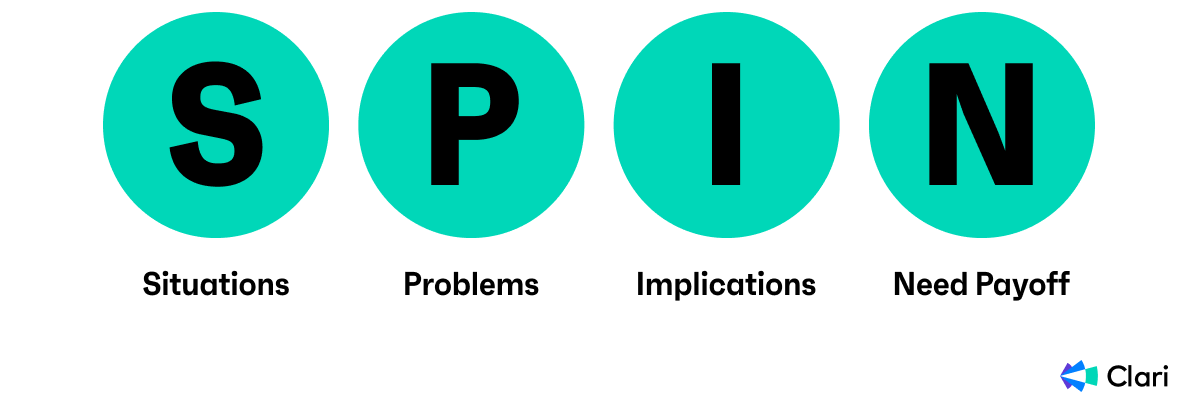The best sales methodology for you isn’t set in stone—it evolves as your experience grows. What works for you as a new rep might not be the right fit as you take on bigger deals or move into different markets. And yet, many sales professionals make the mistake of sticking with one approach, even when the buying landscape changes.
The real skill isn’t about mastering a single sales methodology—it’s about knowing when to use the right one and how to implement it effectively. In this guide, we’ll break down the top eight sales methodologies, highlight when each works best, and give you the insights you need to choose the right one for your selling style.
What is a Sales Methodology?
A sales methodology is a structured framework that guides how you engage with prospects, build relationships, and close deals. It provides a repeatable process that improves your conversion rates and helps create a consistent experience for buyers.
Each methodology has its own principles and strategies, making it important to match the right approach to your personal selling motion and market.
The Top 8 Sales Methodologies to Improve Selling
1. The Challenger Sale
The Challenger Sale focuses on educating buyers by introducing a new perspective, reframing their problem, and guiding them to your solution.
Best For: Competitive markets and complex sales where education is key.
Avoid If: You lack deep industry expertise—this method requires credibility and confidence.
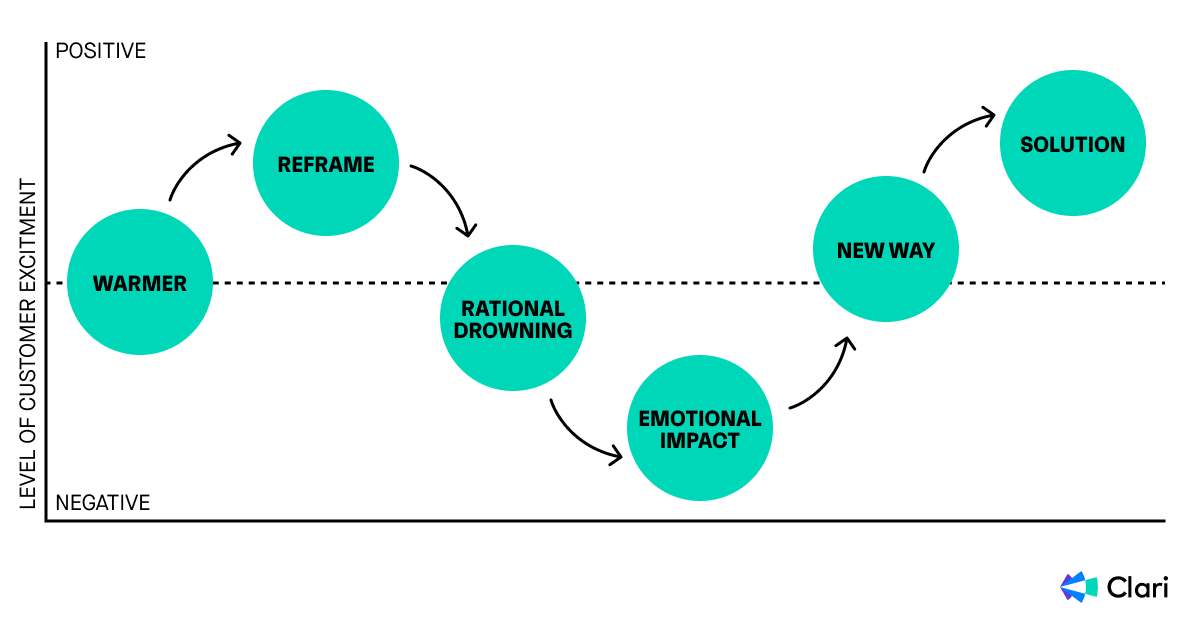
How It Works: Key Phases of The Challenger Sale
You take control of the conversation, challenge customers’ assumptions, and offer insights that lead them to reconsider their current approach.
The Warmer: Establish rapport and introduce a pain point.
- Sales Rep: “I was looking at some recent data on sales forecasting accuracy across B2B companies, and I noticed that even top-performing sales teams struggle to get more than 60% accuracy in their forecasts. I imagine you’ve run into similar challenges at [Prospect’s Company]?”
- Prospect: “Yeah, forecasting is always a challenge for us. We spend hours in spreadsheets trying to get it right, and still, the numbers are off.”
The Reframe: Provide an unexpected insight that shifts their thinking.
- Sales Rep: “Exactly. Most companies assume the problem is just a lack of clean data or better spreadsheet models, which is definitely a part of the problem. But the real issue is that most forecasting methods, on top of being time-consuming, rely too much on rep-driven data entry, which is inherently biased. The top-performing companies in your space are actually shifting towards AI-driven forecasting that eliminates that human bias altogether.”
- Prospect: “That makes sense. We rely heavily on what our reps put into the CRM.”
Rational Drowning: Present the costs of inaction.
- Sales Rep: “Right, and that’s where it gets costly. Based on industry benchmarks, companies that rely on manual forecasting miss their targets by 10-15% on average. That means lost revenue, missed quotas, and wasted sales efforts chasing the wrong deals. And with Enterprise organizations, that can mean losses in the millions.”
- Prospect: “Yeah, we’ve had situations where we were way off on our forecasts, and it caused some serious problems with inventory and resource allocation.”
Emotional Impact: Illustrate the consequences with real-world examples.
A New Way: Explain a different approach.
- Sales Rep: “I was just working with another VP of Sales in your industry who had a similar problem. They thought they were on track for a record-breaking quarter, only to realize in the last two weeks that half of their pipeline wasn’t actually going to close. Their CEO wasn’t happy, and it created a lot of internal pressure to fix the process immediately.”
- Prospect: “Wow. I can see how that would be a nightmare. We’ve had similar close-call situations before.”
Your Solution: Position your product as the best solution.
- Sales Rep: “The companies that have solved this problem have started using real-time AI-driven forecasting, which continuously analyzes past deal patterns and rep behavior to predict what will actually close, rather than relying on what reps say will happen. This means they can get not just more accurate numbers, but those numbers faster than they’ve ever been able to before.”
- Prospect: “That makes sense. We’re always playing catch-up, trying to adjust our forecasts based on gut feel.”
2. Solution Selling
Solution selling is about diagnosing a prospect’s pain, exploring its impact, and helping them visualize how your solution solves their problem.
Best For: Sales teams handling complex deals that require a consultative approach.
Avoid If: Your sales process is transactional and doesn’t require in-depth discovery.
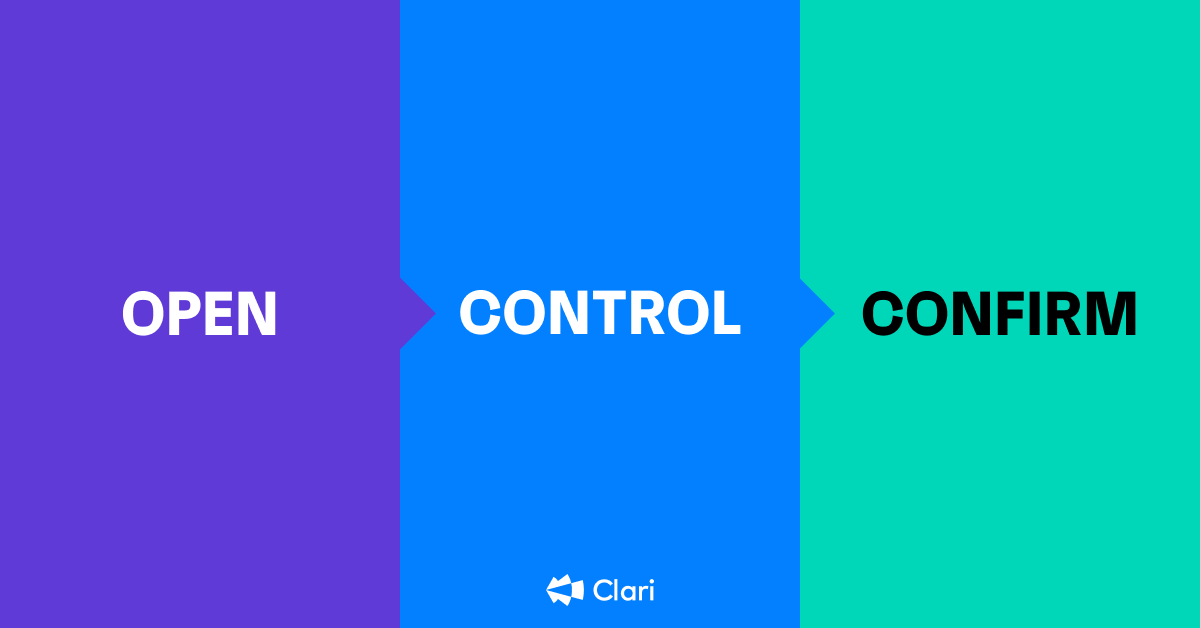
How it works: This methodology is deployed over three phases, and built around three types of diagnostic questions:
- Open Questions: Encourage prospects to speak freely about their challenges and build rapport.
- Control Questions: Guide the conversation with yes/no or multiple-choice answers to gather specific information.
- Confirm Questions: Summarize and confirm what you’ve heard to ensure alignment and demonstrate understanding.
The Three Phases of Solution Selling
1. Diagnose Reasons: Reps use open-ended questions to understand the issues prospects face. Then, they follow up with control questions to uncover the root causes before confirming their findings. Examples:
- (OPEN) “Can you tell me more about [pain]?”
- (CONTROL) “Is it because of...?”
- (CONFIRM) “So the reason for your [pain] is because…? Did I get that right?”
2. Explore Impact: Once pain points are identified, the next step is to determine how much of an effect they have across the organization. This helps intensify urgency. Examples:
- (OPEN) “Who else in your organization does this [pain] affect?”
- (CONTROL) “If you don’t solve this problem, then [consequence]?”
- (CONFIRM) “It sounds like you… Is that correct?”
3. Visualize Capabilities: The final phase is helping the prospect visualize how your solution eliminates their pain and enables their success. Examples:
- (OPEN) “What is it going to take for you to achieve [goal]?”
- (CONTROL) “What if there’s a way that you could solve [problem]? How much would that help?”
- (CONFIRM) “If you had the ability to [capability], what would your [process] look like?”
3. SPIN Selling
SPIN stands for Situation, Problem, Implication, Need-Payoff — a question-based selling framework designed to build urgency and value.
Best For: Consultative sales where in-depth discovery is crucial.
Avoid If: The sales cycle is short and doesn’t allow for deep questioning.
How It Works:
Situation: Gather information about the prospect’s current environment.
- Example: “Tell me about your current sales engagement process. How do you currently track and capture sales activities?”
Problem: Uncover pain points and inefficiencies.
- Example: “That sounds time-consuming, to have your bouncing back and forth between platforms. Have you noticed any issues with data being lost between your CRM and SE tools too?”
Implication: Highlight the consequences of the problem.
- Example: “I see this a lot. If deals are slipping and reps and their managers don’t have accurate visibility into past interactions, it can really harm the endgame of a deal. How has that impacted your team?
Need-Payoff: Help them see the value of solving it.
- Example: “Imagine if you had a tool that could was native to your CRM, so reps didn’t have to manually log activity, or worry about it being lost between the two platforms. That would give you the ability to see the entire trajectory of a relationship with a prospect. How valuable would it be if you could capture 100% of your sales activities?”
4. MEDDPICC
MEDDPICC is a qualification methodology designed to help sales teams diagnose deals effectively and drive better outcomes for customers. It provides structure to complex sales cycles, helping teams:
- Unlock higher average selling price (ASP)
- Reduce deal slippage
- Accelerate win rates
- Improve retention
Best For: Enterprise sales teams managing high-value, complex deals with multiple decision-makers.
Avoid If: You are in a fast-moving transactional sales environment where a lighter qualification framework would be more effective.

How it works: The Components of MEDDPICC:
- M – Metrics: Quantifiable value that your solution provides to the customer. (e.g., "Reduce deal slippage by 30%")
- E – Economic Buyer:The person who has final approval and is signing the check.
- D – Decision Criteria: The factors that drive the prospect’s purchasing decision (e.g., ease of implementation, ROI, security compliance).
- D – Decision Process: The steps and stakeholders involved in making the final decision.
- P – Paper Process: The administrative steps and procurement procedures needed to complete the purchase.
- I – Identify Pain: Uncover the critical pain points that your product or solution can address.
- C – Champion: The person with internal influence who advocates for your solution and can drive the deal forward.
- C – Competition: Other vendors or internal projects competing for budget and resources.
5. Sandler Selling System
The Sandler Selling System is designed to reverse traditional sales pressure by encouraging buyers to convince themselves of the need for a solution.
Best For: Relationship-driven sales where trust is critical.
Avoid If: Your sales process is transactional and price-driven.
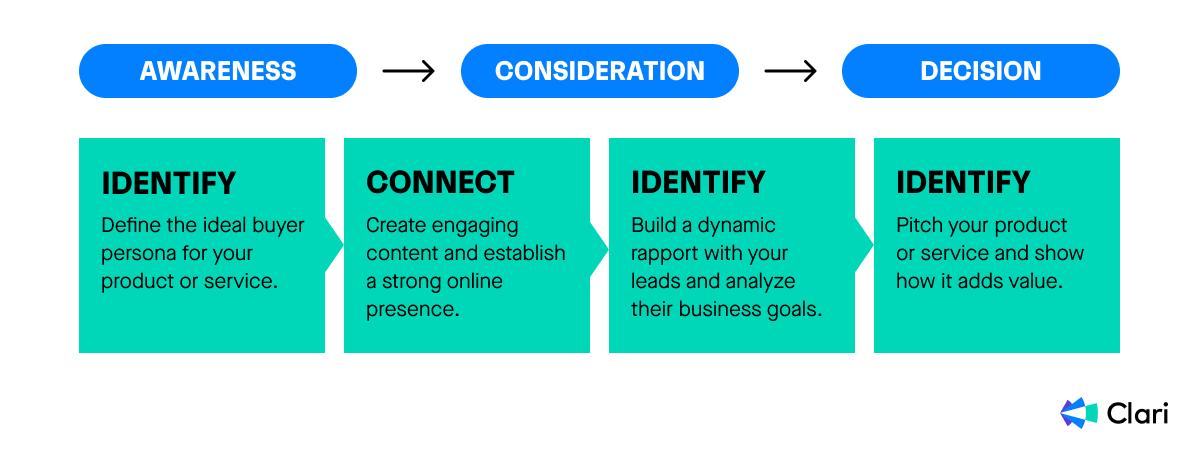
How the Sandler Selling System Works:
Bonding & Rapport: Build trust with the prospect.
- “I noticed that [Company] has been growing quickly, and with growth comes challenges in revenue forecasting. Many sales leaders I speak with are dealing with unpredictable pipelines. How has that been for you?"
Up-Front Contracts: Set mutual expectations early.
- "So I wanted to give you a ring today to take a quick couple of minutes of your time to talk about how you’re forecasting at your org and tell you a little about Clari and how we might be able to help. If it sounds interesting, we can keep chatting, and if it’s not relevant, we can go ahead and part ways. Does that sound fair?"
Pain Discovery: Guide buyers to acknowledge their problems.
- "What happens when your sales team misses forecasts? How does that impact board meetings, resource planning, or even rep compensation?"
Budget: Assess financial feasibility.
- "Companies dealing with these issues often look for a platform that reduces forecasting errors and increases pipeline accuracy. Have you allocated a budget for solving this problem?"
Decision-Making Process: Confirm how decisions are made.
- "Considering next steps, I want to make sure we make this process as smooth for you guys as possible. Is there anyone else we would need to include as we continue our conversation?"
Fulfillment: Present your solution as a perfect fit.
- "Based on what you’ve shared, it sounds like having real-time AI-driven forecasting and pipeline visibility would make a huge difference for your team. So I’d love to go ahead and schedule you some time with my Account Director to walk you through how we can help your team do exactly that. Do you have twenty minutes next week?”
Post-Sell: Reinforce the decision and prevent buyer’s remorse.
- “To make sure we make the most of your time, are there any other topics you want addressed or any other issues you want to make sure we discuss in the meeting? I’ll be sure to send over a gift card for some coffee as well, as a thank you for taking the time!”
6. Inbound Sales
Inbound Sales aligns with modern digital buying behaviors, guiding prospects through an education-driven journey that follows the Awareness, Consideration, and Decision stages.
- Awareness Stage: Buyers recognize a problem and seek educational content to understand it better.
- Consideration Stage: Buyers evaluate different solutions and compare options.
- Decision Stage: Buyers select the best-fit solution and prepare for implementation.
Best For: Businesses with strong content marketing strategies that generate inbound leads.
Avoid If: You rely primarily on outbound prospecting and direct outreach.

How It Works:
- Identify: Find leads through inbound marketing strategies like content, SEO, and social engagement.
- Connect: Engage potential buyers based on their expressed interest and online behavior.
- Explore: Conduct discovery calls to understand pain points and qualify leads.
- Advise: Provide tailored recommendations and insights to help them make an informed decision.
7. Conceptual Selling
Conceptual Selling focuses on uncovering a buyer’s decision-making process and aligning your sales pitch accordingly.
Best For: Complex deals where relationship-building is essential.
Avoid If: Your deals are transactional and require minimal persuasion.
How It Works: Gather information about the prospect’s challenges. Explore how they view success. Align your solution to their perception of value. Build commitment through personalized solutions.
8. SNAP Selling
Designed for today’s busy buyers, SNAP (Simple, Invaluable, Align, Priority) helps you break through the noise.
Best For: Fast-moving sales cycles and competitive industries.
Avoid If: Your sales process requires in-depth discovery and education.
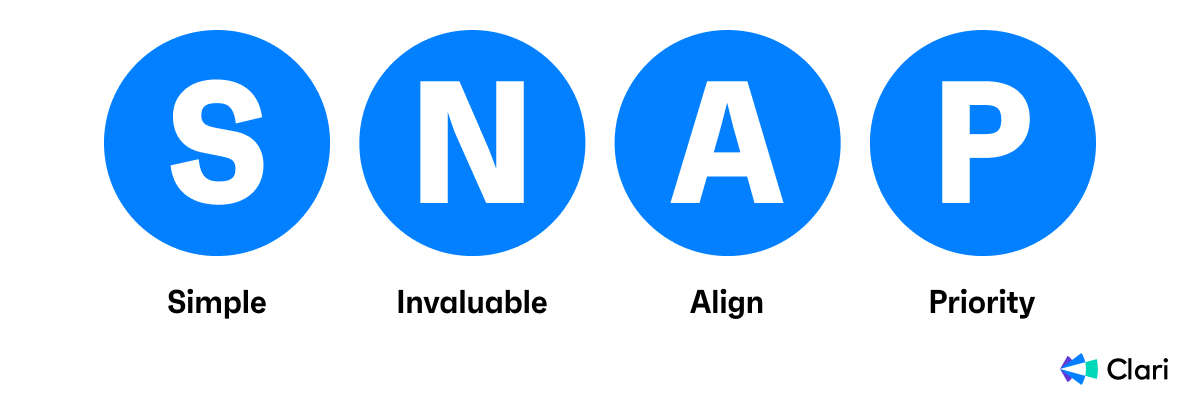
How SNAP Selling Works:
Simple: Make it easy for buyers to understand your value.
- Example: “We know that simple GTM motions can be made complicated by manual, time-consuming processes that leave pivotal gaps in data.”
iNvaluable: Establish yourself as a trusted expert.
- Example: "Our merging of forecast, sales engagement, and conversation intelligence processes under one platform can lead to 97% forecast accuracy, as well as 30% increase in productivity.”
Align: Show how your solution fits their goals.
- Example: "Since improving forecast accuracy and retention are top of mind for your org, having pipeline, SE, and CI functions under one roof can fill in those data gaps.”
Priority: Address their most pressing needs first.
- Example: "If improving forecast accuracy and hitting your targets is a top priority this quarter, implementing this now could help you see results before the next board review."
Choosing the Right Sales Methodology
Picking the right methodology comes down to:
- Your Sales Cycle Length – Complex sales require methodologies like MEDDIC, while transactional sales benefit from SNAP or Inbound Sales.
- Your Market & Competition – Challenger Selling works well in competitive markets where differentiation is key.
- Your Buyer’s Behavior – If your buyers are proactive, Inbound Sales might be the answer. If they need convincing, SPIN or Solution Selling could be better.
- Your Experience Level – Some methodologies, like Challenger or Conceptual Selling, require seasoned reps, while others are easier to adopt.
There’s no one-size-fits-all approach when it comes to sales methodologies. The key is flexibility—knowing when to use each framework and adapting it to fit your evolving sales motion.
If you’re still unsure which methodology is right for you, start by analyzing your most successful deals. What patterns emerge? That insight will help guide you toward the right methodology to maximize your success.
Need more help? Chat with our team at Clari —we’re here to help you navigate the best approach for your sales strategy.


